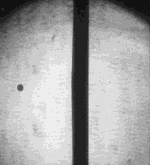 | ||
A microsecond is an SI unit of time equal to one millionth (0.000001 or 10−6 or 1/1,000,000) of a second. Its symbol is μs. One microsecond is to one second as one second is to 11.574 days.
Contents
A microsecond is equal to 1000 nanoseconds or 1/1,000 milliseconds. Because the next SI prefix is 1000 times larger, measurements of 10−5 and 10−4 seconds are typically expressed as tens or hundreds of microseconds. A microsecond of sound signal sample (44.1 kHz, 2 channel, 24 bit, WAV) is typically stored on 4 µm of CD, 2 bits per µs per 4 µm.
Examples
For reference
References
Microsecond Wikipedia(Text) CC BY-SA
